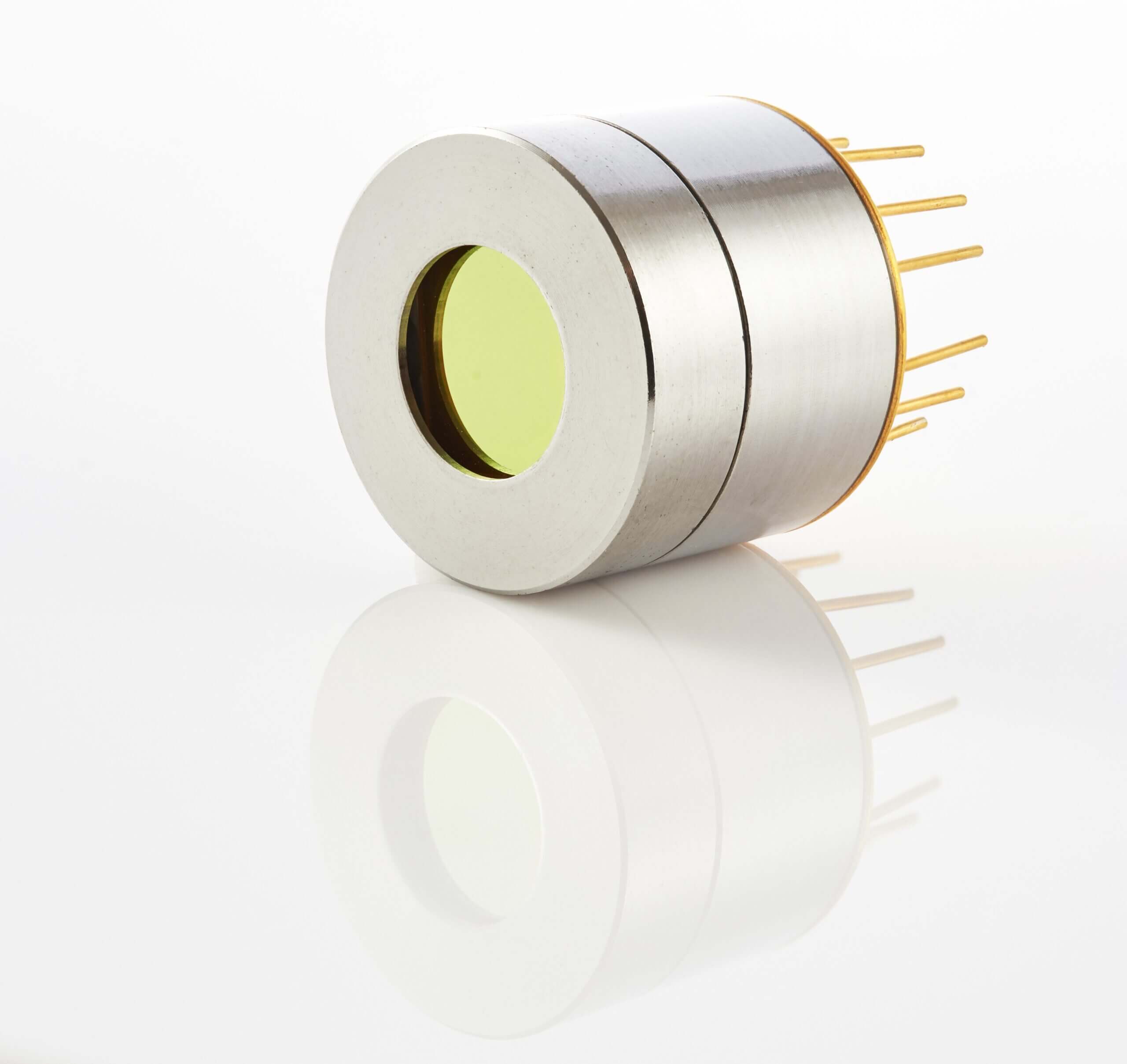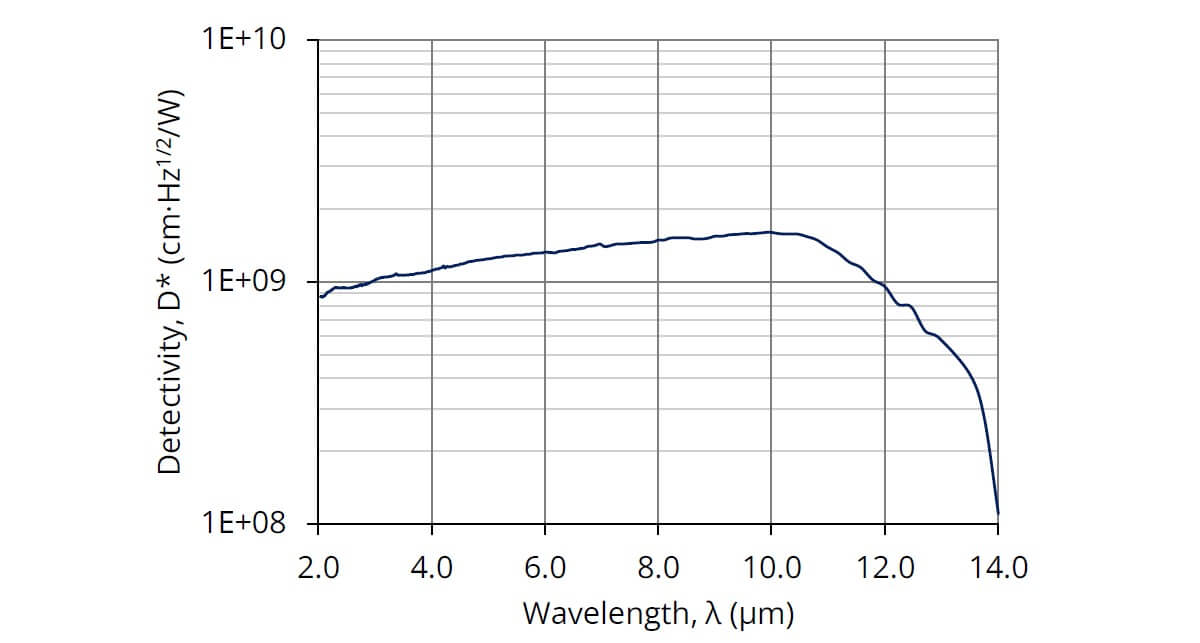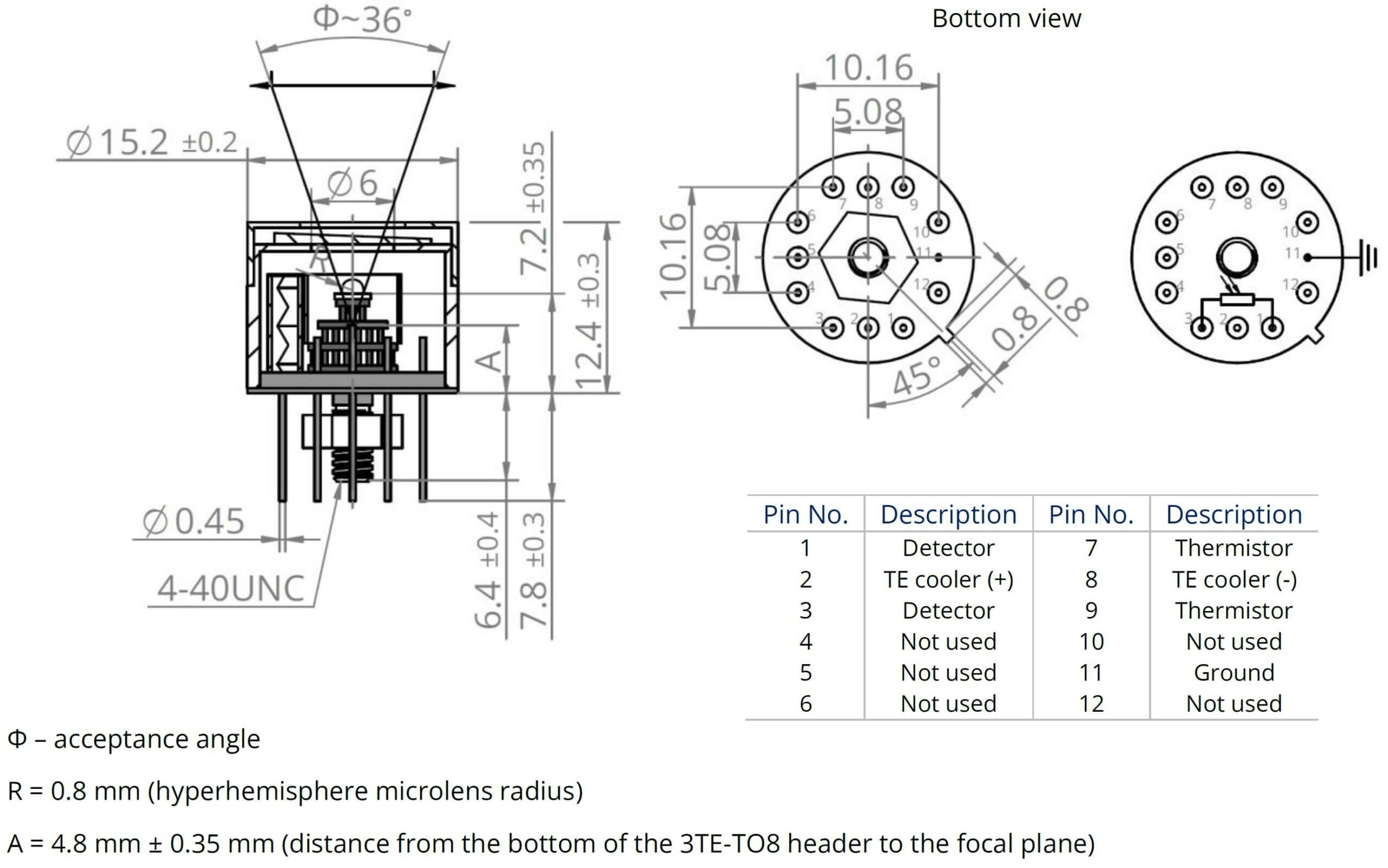HgCdTe (MCT) three-stage TE cooled photoconductive infrared detectorPCI-3TE-12-1×1-TO8-wZnSeAR-36
PCI-3TE-12-1×1-TO8-wZnSeAR-36 is a three-stage thermoelectrically cooled IR photoconductor, based on sophisticated HgCdTe heterostructure for the best performance and stability. The device is optimized for the maximum performance at λopt = 12 µm. Detector element is monolithically integrated with hyperhemispherical GaAs microlens in order to improve performance of the device. Photoconductive detector should operate in optimum bias voltage and current readout mode. Performance at low frequencies is reduced due to 1/f noise. 3° wedged zinc selenide anti-reflection coated (wZnSeAR) window prevents unwanted interference effects.

Features
Spectral range: 2.0 to 13.8 µm
Hyperhemiimmersion microlens technology applied
Long-term stability and reliability
Quantity discounted price
Fast delivery
No minimum order quantity required
Applications
FTIR spectroscopy
Detector configuration
| Detector type | photoconductive |
| Active element material | epitaxial HgCdTe heterostructure |
| Optical area, AO | 1 mm × 1 mm |
| Immersion | hyperhemisphere |
| Cooling | 3TE |
| Temperature sensor | thermistor |
| Detector package | TO8 |
| Acceptance angle, Φ | ~36 deg. |
| Window | wZnSeAR
(3 deg. wedged zinc selenide, anti-refelction coating) |
Specification
(Tamb = 293 K, Tchip = 210 K, Vb = 1.8 V, unless otherwise noted)
| Parameter | Value |
Unit | |||
| Min. | Typ. | Max. | – | ||
| Active element temperature | – | 210 | – | K | |
| Cut-on wavelength, λcut-on (10%) | – | – | 20 | μm | |
| Peak wavelength, λpeak | 9.2 | 10.0 | 10.2 | μm | |
| Optimum wavelength, λopt | – | 12.0 | – | μm | |
| Cut-off wavelength, λcut-off (10%) | 13.8 | – | – | μm | |
| Detectivity, D* (λpeak, 20 kHz) | 1.6×109 | – | – | cm⋅Hz1/2/W | |
| Detectivity, D* (λopt, 20 kHz) | 9.0×108 | – | – | cm⋅Hz1/2/W | |
| Current responsivity, Ri (λpeak) | 0.11 | – | – | A/W | |
| Current responsivity, Ri (λopt) | 0.07 | – | – | A/W | |
| Time constant, τ | – | – | 5 | ns | |
| Resistance, R | – | – | 300 | Ω | |
| Bias voltage Vb | – | – | 1.8 | V | |
| 1/f noise corner frequency fc, Hz | – | – | 20 | kHz | |
Spectral response
(Typ., Tamb = 293 K, Tchip = 210 K)

Mechanical layout
(Unit: mm)


Access to file
Access to this file is limited. In order to download it, please provide all the information and submit the form.
Application notes

Temperature sensor characteristics
Related product
Contact form























